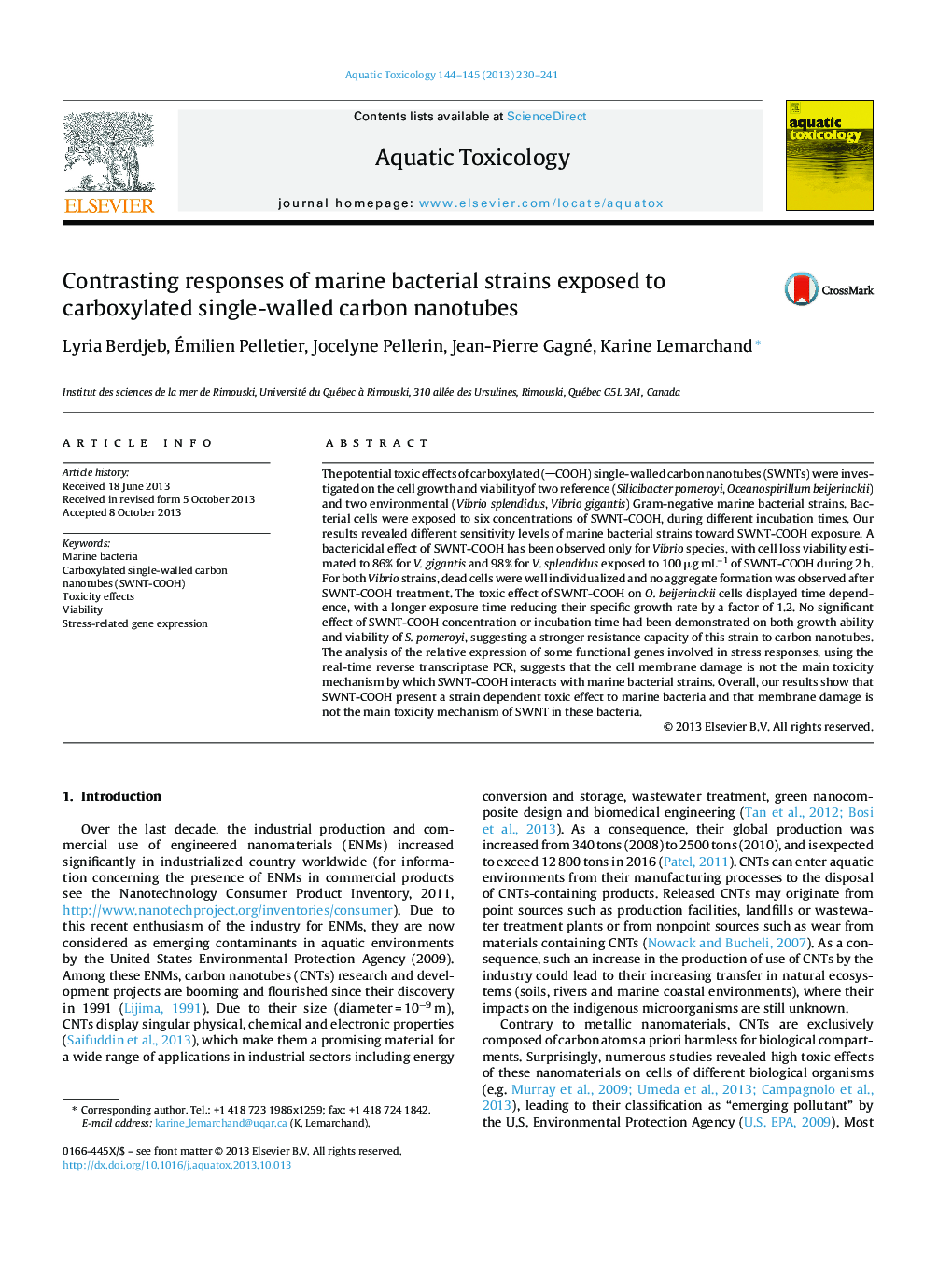| کد مقاله | کد نشریه | سال انتشار | مقاله انگلیسی | نسخه تمام متن |
|---|---|---|---|---|
| 4529353 | 1625960 | 2013 | 12 صفحه PDF | دانلود رایگان |

• The potential toxic effects of functionalized (COOH) single-walled carbon nanotubes (SWNTs) were investigated on the cell growth and viability of several Gram-negative marine bacterial strains.
• Different sensitivity levels of marine bacterial strains toward SWNT-COOH exposure.
• Higher toxicity of SWNT-COOH toward dispersed bacteria cells.
• The relative expression of some functional genes involved in stress responses suggests that the oxidative stress response is the main toxicity mechanism of SWNT-COOH.
The potential toxic effects of carboxylated (COOH) single-walled carbon nanotubes (SWNTs) were investigated on the cell growth and viability of two reference (Silicibacter pomeroyi, Oceanospirillum beijerinckii) and two environmental (Vibrio splendidus, Vibrio gigantis) Gram-negative marine bacterial strains. Bacterial cells were exposed to six concentrations of SWNT-COOH, during different incubation times. Our results revealed different sensitivity levels of marine bacterial strains toward SWNT-COOH exposure. A bactericidal effect of SWNT-COOH has been observed only for Vibrio species, with cell loss viability estimated to 86% for V. gigantis and 98% for V. splendidus exposed to 100 μg mL−1 of SWNT-COOH during 2 h. For both Vibrio strains, dead cells were well individualized and no aggregate formation was observed after SWNT-COOH treatment. The toxic effect of SWNT-COOH on O. beijerinckii cells displayed time dependence, with a longer exposure time reducing their specific growth rate by a factor of 1.2. No significant effect of SWNT-COOH concentration or incubation time had been demonstrated on both growth ability and viability of S. pomeroyi, suggesting a stronger resistance capacity of this strain to carbon nanotubes. The analysis of the relative expression of some functional genes involved in stress responses, using the real-time reverse transcriptase PCR, suggests that the cell membrane damage is not the main toxicity mechanism by which SWNT-COOH interacts with marine bacterial strains. Overall, our results show that SWNT-COOH present a strain dependent toxic effect to marine bacteria and that membrane damage is not the main toxicity mechanism of SWNT in these bacteria.
Journal: Aquatic Toxicology - Volumes 144–145, 15 November 2013, Pages 230–241